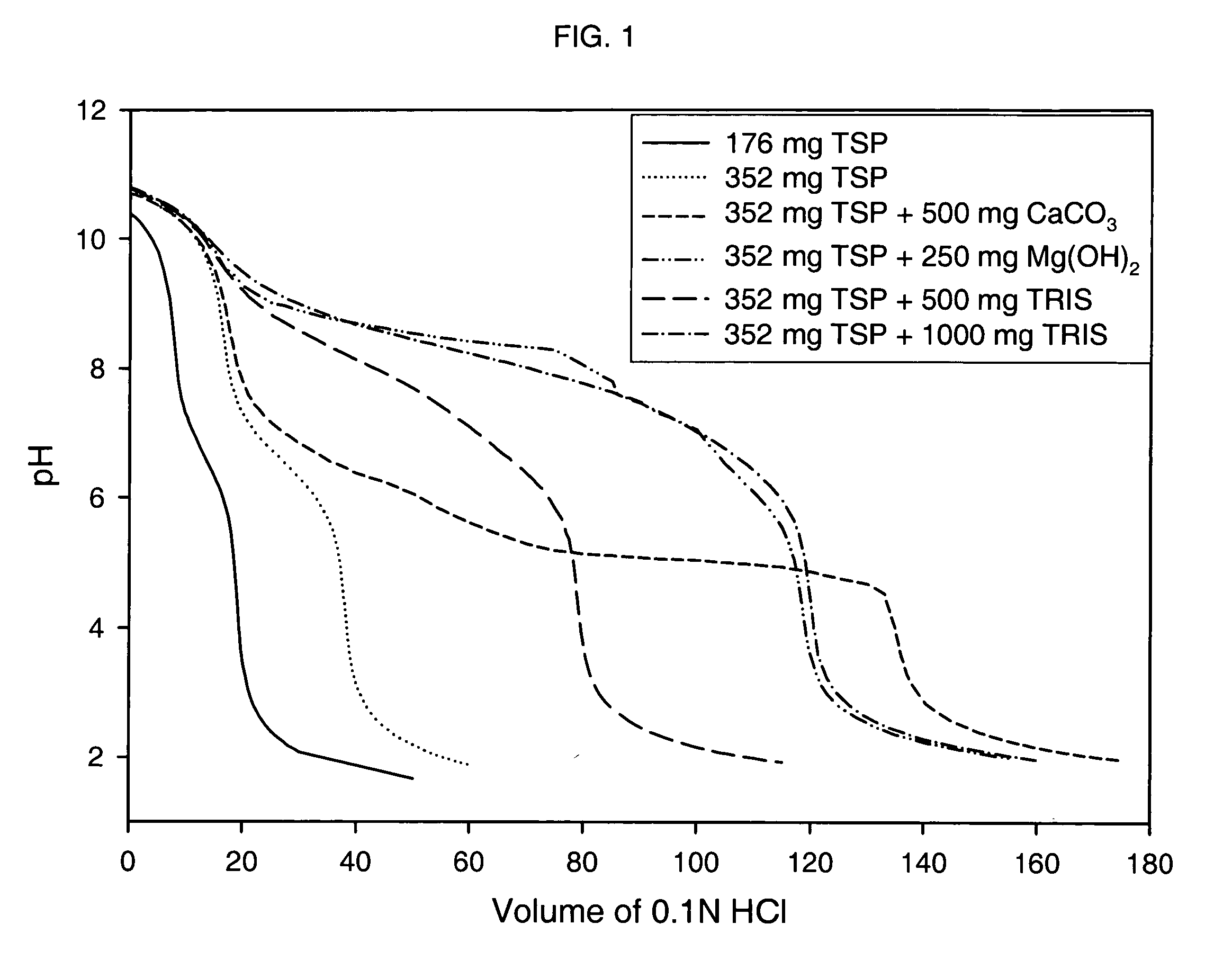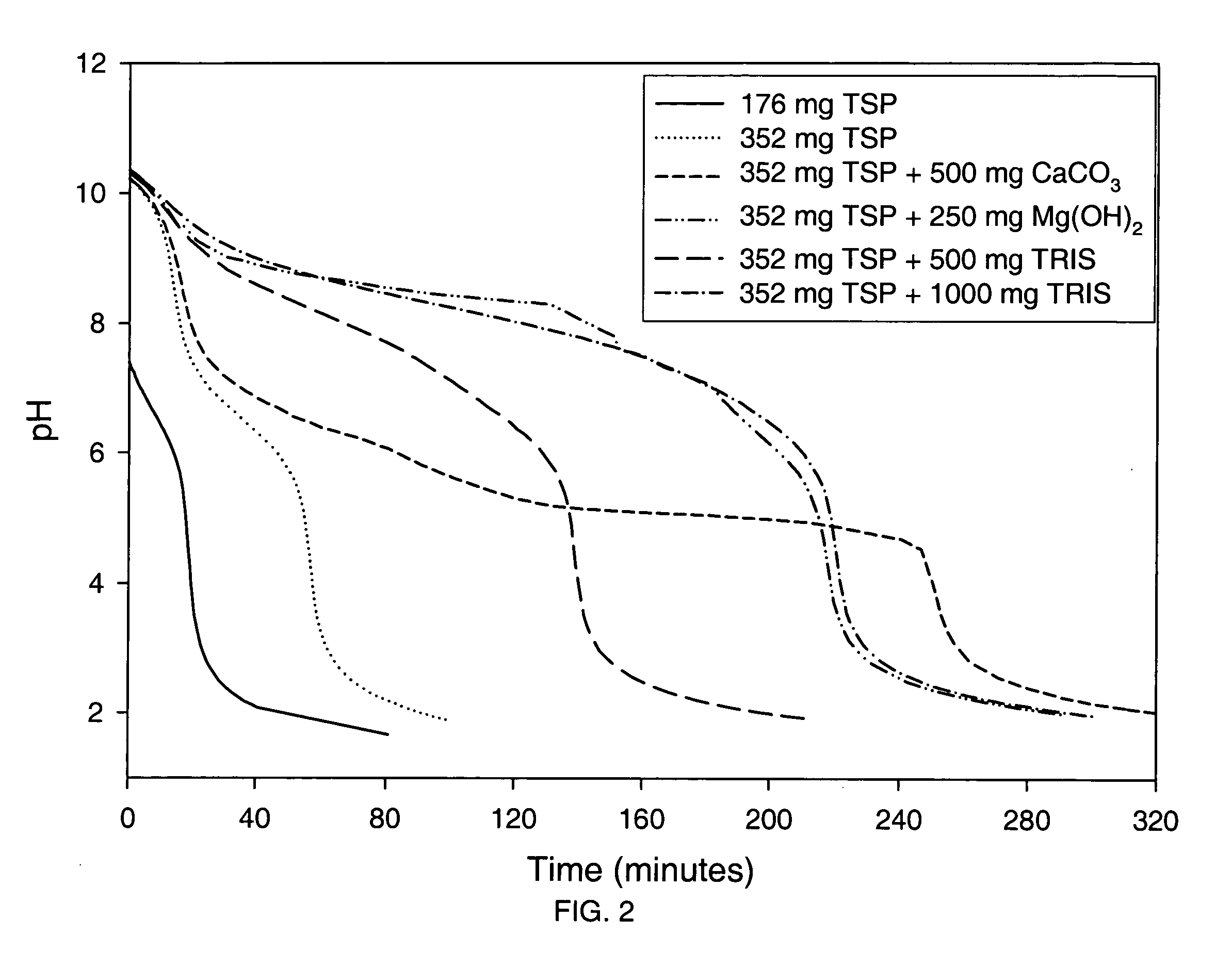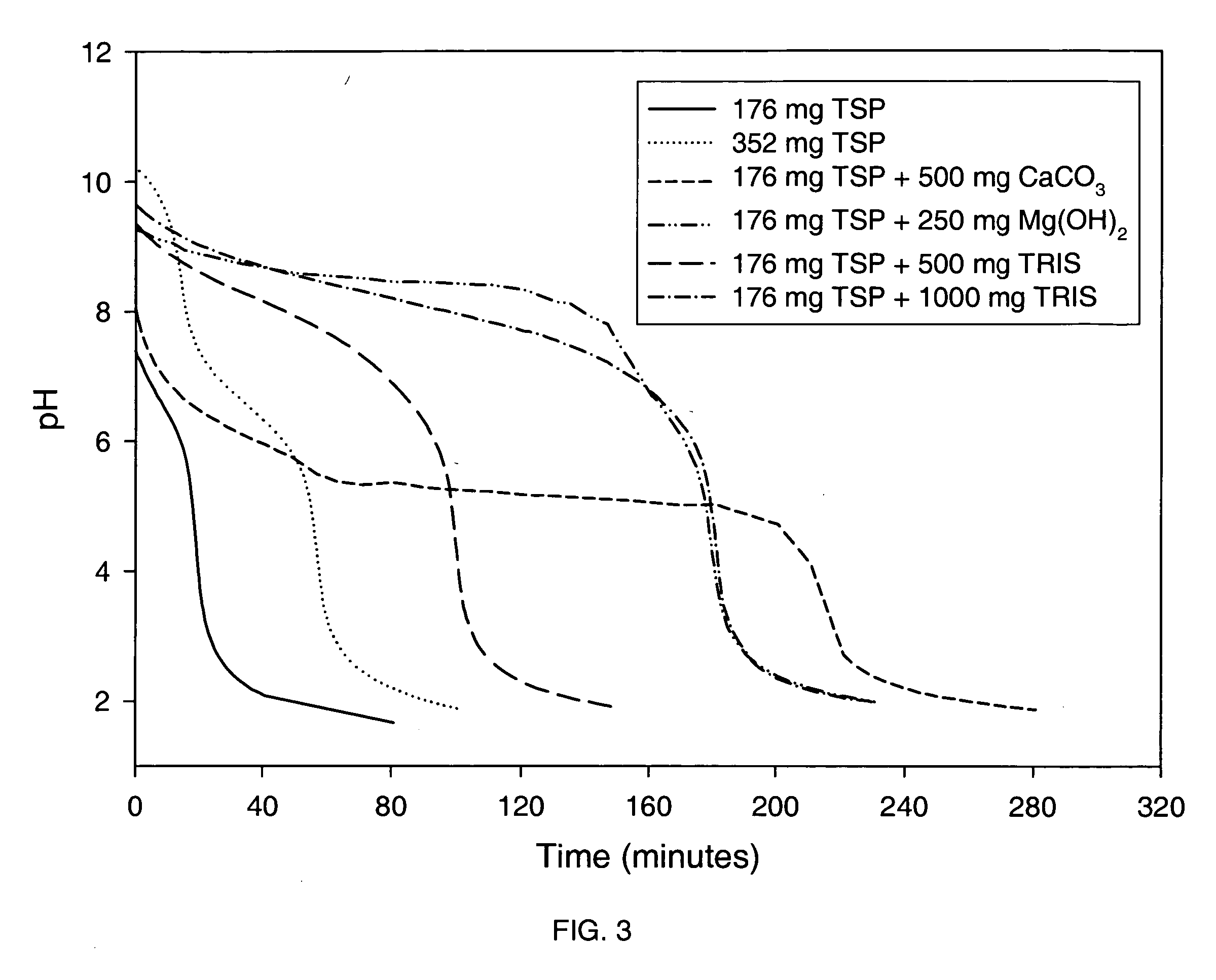Azithromycin dosage forms with reduced side effects
a technology of azithromycin and side effects, applied in the direction of powder delivery, drug composition, inorganic non-active ingredients, etc., can solve the problems of vomiting in a significant number of patients, adverse gastrointestinal (gi) side effects, etc., and achieve the effect of reducing the frequency of gastrointestinal side effects and reducing gastrointestinal side effects
- Summary
- Abstract
- Description
- Claims
- Application Information
AI Technical Summary
Benefits of technology
Problems solved by technology
Method used
Image
Examples
example 1
Effect of Various Alkalizing Agents on Stomach pH
[0205] A clinical study was conducted to monitor the pH of the stomach (using a pH probe) after dosing six different formulations containing alkalizing agents. Prior to performing the clinical study, a titration study was conducted with the alkalizing agent formulation to determine the pH change resulting from adding 0.1N HCl (pH 1.2) to the alkalizing agent.
[0206] The formulations tested included the following alkalizing agents: [0207] Formulation 1-176 mg anhydrous TSP [0208] Formulation 2-352 mg anhydrous TSP [0209] Formulation 3-352 mg anhydrous TSP and 500 mg calcium carbonate [0210] Formulation 4-352 mg anhydrous TSP and 250 mg magnesium hydroxide [0211] Formulation 5-352 mg anhydrous TSP and 500 mg Tromethamine (TRIS) [0212] Formulation 6-352 mg anhydrous TSP and 1000 mg Tromethamine (TRIS)
[0213] Further, each formulation was prepared by blending the specified alkalizing agent with 19.36 g sucrose, 0.067 g hydroxypropyl cell...
example 2
Comparison of In Vitro Release Rates From Dosage Forms with Different Amounts of the Same Alkalizing Agent
[0229] The in vitro release rates of azithromycin were determined for various azithromycin sustained release dosage forms, which each contained 2 gA of the same azithromycin multiparticulate (MP1) and varying amounts of TSP as an alkalizing agent, as compared to an azithromycin dosage form containing MP1 multiparticulates and no TSP, and to an azithromycin immediate release dosage form which did contain TSP. The sustained release dosage forms were prepared as described in Step A, below, while the in vitro release rate study, and its results, are described in the following Step B.
Step A—Preparation of Azithromycin Sustained Release Dosage Forms
[0230] Five azithromycin sustained release dosage forms (hereinafter “SR1”, “SR2”, “SR3”, “SR4”, “SR5”) were prepared by mixing 2000 mgA of azithromycin multiparticulates MP1, prepared as described below, with one of six excipient blend...
example 3
Comparison of In Vitro Release Rates in Dosage Forms Having Different Alkalizing Agents
[0247] The in vitro release rates of azithromycin, in 0.01N HCl were determined for various azithromycin sustained release dosage forms, which each contained 2 gA of the azithromycin multiparticulates MP1 were prepared with one of three excipients blends, as described below: [0248]“SR6” included 38.7 g sucrose and 100 mg of the weak base sodium carbonate, [0249]“SR7” included 38.7 g sucrose and 50 mg magnesium hydroxide, and [0250]“SR8” included 38.7 g sucrose and 1.0 g of Liquid Maalox(®) (smooth cherry, regular strength, from Novartis) which contains 37.1 mg aluminum hydroxide, 37.1 mg of magnesium hydroxide, and 3.7 mg simethicone.
[0251] The rates of release of azithromycin from these sustained release dosage forms were measured in vitro as described in Example 2. The results of these dissolution tests, which are provided in Table 2, below, showed that the addition of various alkalizing agent...
PUM
| Property | Measurement | Unit |
|---|---|---|
| wt % | aaaaa | aaaaa |
| pH | aaaaa | aaaaa |
| weight percent | aaaaa | aaaaa |
Abstract
Description
Claims
Application Information
 Login to View More
Login to View More - R&D
- Intellectual Property
- Life Sciences
- Materials
- Tech Scout
- Unparalleled Data Quality
- Higher Quality Content
- 60% Fewer Hallucinations
Browse by: Latest US Patents, China's latest patents, Technical Efficacy Thesaurus, Application Domain, Technology Topic, Popular Technical Reports.
© 2025 PatSnap. All rights reserved.Legal|Privacy policy|Modern Slavery Act Transparency Statement|Sitemap|About US| Contact US: help@patsnap.com



